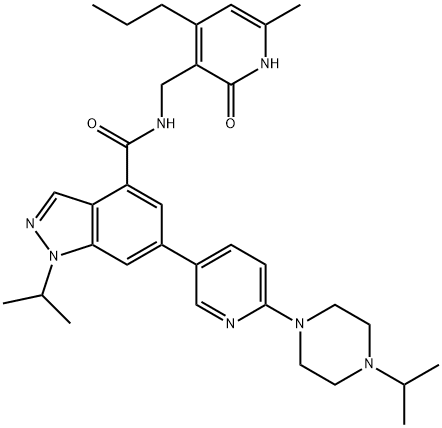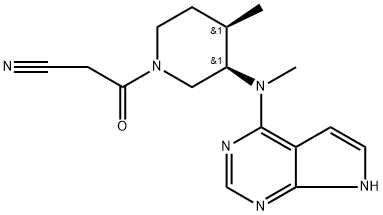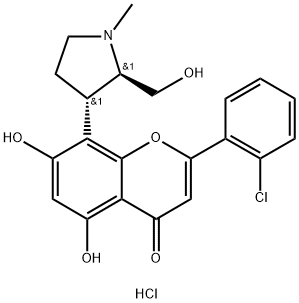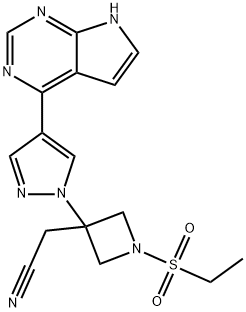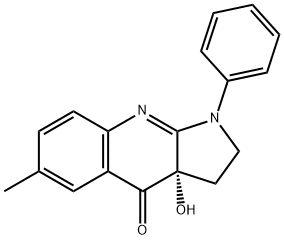Debio-1347
- CAS NO.:1265229-25-1
- Empirical Formula: C20H16N6O
- Molecular Weight: 356.38
- MDL number: MFCD28502053
- SAFETY DATA SHEET (SDS)
- Update Date: 2024-11-19 23:02:33
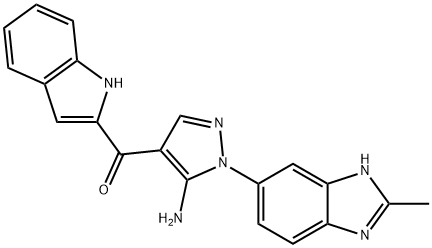
What is Debio-1347?
The Uses of Debio-1347
CH5183284 is an orally available and selective FGFR (fibroblast growth factor receptor) inhibitor acting on FGFR 1, 2, and 3.
Biological Activity
ch5183284 (debio-1347) is a selective and novel inhibitor of fgfr with ic50 value of 9.3, 7.6, 22 and 290 nm for fgfr1, fgfr2, fgfr3 and fgfr4, respectively [1].fibroblast growth factor receptors (fgfrs) are tyrosine kinases and receptors for fibroblast growth factors and consist of fgfr1, fgfr2, fgfr3 and fgfr4. in cancer, fgfr is activated by point mutations, gene amplification or chromosomal translocations/rearrangements and is involved in angiogenesis, cell growth, cell migration, invasion and metastasis [1].ch5183284 (debio-1347) is a selective and novel fgfr inhibitor. in a competitive binding assay, ch5183284 (debio-1347) binding with fgfr1, fgfr2, fgfr3, fgfr4 and kdr with kd values of 20, 20, 25, 740 and 960 nm, respectively. in dms114, snu-16 and kms11 cell lines, ch5183284 (debio-1347) (100-300 nm) inhibited autophosphorylation of fgfr1, fgfr2 and fgfr3. in cancer cell lines with the fgfr genetic alterations, ch5183284 (debio-1347) showed antiproliferative activity [1].in xenograft mouse models, ch5183284 (debio-1347) inhibited tumor growth against xenografts with fgfr genetic alterations such as kg1 (leukemia, fgfr1op-fgfr1 fusion), mfe-280 (endometrial cancer, fgfr2 s252w mutation), snu-16 (gastric cancer, fgfr2 amplification), rt112/84 (bladder cancer, fgfr3-tacc3 fusion) and um-uc-14 (bladder cancer, fgfr3 s249c mutation) by 134%, 100%, 147%, 125% and 116%, respectively [1].
Synthesis
The synthesis of Debio-1347 is as follows:
An aqueous solution (1.67 ml) of 4 M sodium hydroxide was added to an ethanol solution (17 ml) of [5-amino-1-(2-methyl-1H-benzimidazol-5-yl)-1H-pyrazol-4-yl]-(1-benzenesulfonyl-1H-indol-2-yl) methanone (87 mg). The resulting mixture was stirred at room temperature for 2 hours. The reaction mixture was poured into water. The resulting solid was collected by filtration, washed with water, and dried to give Debio-1347 (40 mg, 63%).
References
[1]. nakanishi y, akiyama n, tsukaguchi t, et al. the fibroblast growth factor receptor genetic status as a potential predictor of the sensitivity to ch5183284/debio 1347, a novel selective fgfr inhibitor. mol cancer ther, 2014, 13(11): 2547-2558.
Properties of Debio-1347
| Boiling point: | 775.5±55.0 °C(Predicted) |
| Density | 1.51±0.1 g/cm3(Predicted) |
| storage temp. | Store at -20°C |
| solubility | ≥35.6 mg/mL in DMSO; insoluble in EtOH; insoluble in H2O |
| form | solid |
| pka | 10.51±0.10(Predicted) |
| color | Off-white to yellow |
| CAS DataBase Reference | 1265229-25-1 |
Safety information for Debio-1347
Computed Descriptors for Debio-1347
New Products
4-Aminotetrahydropyran-4-carbonitrile Hydrochloride (R)-3-Aminobutanenitrile Hydrochloride 4-AMINO-TETRAHYDRO-PYRAN-4-CARBOXYLIC ACID HCL 4-(Dimethylamino)tetrahydro-2H-pyran-4-carbonitrile 3-((Dimethylamino)methyl)-5-methylhexan-2-one oxalate 1,4-Dioxa-8-azaspiro[4.5]decane 5-Bromo-2-nitropyridine Nimesulide BP Aceclofenac IP/BP/EP Mefenamic Acid IP/BP/EP/USP Diclofenac Sodium IP/BP/EP/USP Ornidazole IP Diclofenac Potassium SODIUM AAS SOLUTION ZINC AAS SOLUTION BUFFER SOLUTION PH 10.0(BORATE) GOOCH CRUCIBLE SINTERED AQUANIL 5 BERYLLIUM AAS SOLUTION 2-Bromo-1-(bromomethyl)-3-chloro-5-nitrobenzene 2-Bromo-3-nitroaniline N-(3-Hydroxypropyl)-N-methylacetamide 3-Bromo-6-chloropyridazine 4-ethyl-3-nitrobenzoic acidRelated products of tetrahydrofuran
You may like
-
 1-Methyl-6-oxo-1,6-dihydropyridazine-3-carbonitrile 98%View Details
1-Methyl-6-oxo-1,6-dihydropyridazine-3-carbonitrile 98%View Details
99903-60-3 -
 88491-46-7 98%View Details
88491-46-7 98%View Details
88491-46-7 -
 1823368-42-8 98%View Details
1823368-42-8 98%View Details
1823368-42-8 -
 2-(3-(tert-butyl)phenoxy)-2-methylpropanoic acid 1307449-08-6 98%View Details
2-(3-(tert-butyl)phenoxy)-2-methylpropanoic acid 1307449-08-6 98%View Details
1307449-08-6 -
 Ethyl 3-(furan-2-yl)-3-hydroxypropanoate 25408-95-1 98%View Details
Ethyl 3-(furan-2-yl)-3-hydroxypropanoate 25408-95-1 98%View Details
25408-95-1 -
 2-Chloro-5-fluoro-1-methoxy-3-methylbenzene 98%View Details
2-Chloro-5-fluoro-1-methoxy-3-methylbenzene 98%View Details
1805639-70-6 -
 1784294-80-9 98%View Details
1784294-80-9 98%View Details
1784294-80-9 -
 Lithium ClavulanateView Details
Lithium ClavulanateView Details
61177-44-4
